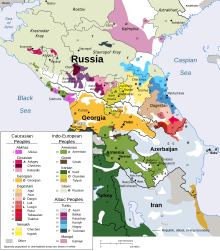

Hill people, also referred to as mountain people, is a general term for people who live in the hills and mountains. This includes all rugged land above 300 metres (980 ft) and all land (including plateaus) above 2,500 metres (8,200 ft) elevation. The climate is generally harsh, with steep temperature drops between day and night, high winds, runoff from melting snow and rain that cause high levels of erosion and thin, immature soils.
People have used or lived in the mountains for thousands of years, first as hunter-gatherers and later as farmers and pastoralists. The isolated communities are often culturally and linguistically diverse. Today about 720 million people, or 12% of the world's population, live in mountain regions, many of them economically and politically marginalized. The mountain residents have adapted to the conditions, but in the developing world they often suffer from food insecurity and poor health. They depend on crops, livestock and forest products, and tend to be poor. In the developed world the mountain people are generally prosperous, and the mountains may be used for tourism and outdoor recreation. Mining is also widespread and dates back to the pre-Christian era.
In parts of the developing world the mountain communities depend on remittances from young men who have gone to work in the lowlands or overseas. Although 70% of mountain people live in rural areas, the rest live in cities, including large cities such as Mexico City, with a population of around 21 million. The cities attract temporary or permanent migrants from the rural areas. The smaller cities are more connected to the mountain culture and economy than the larger ones.
